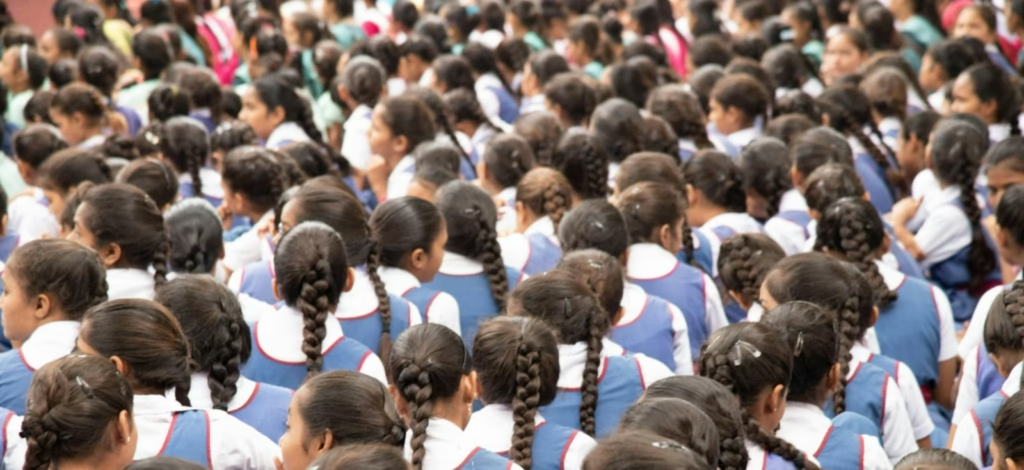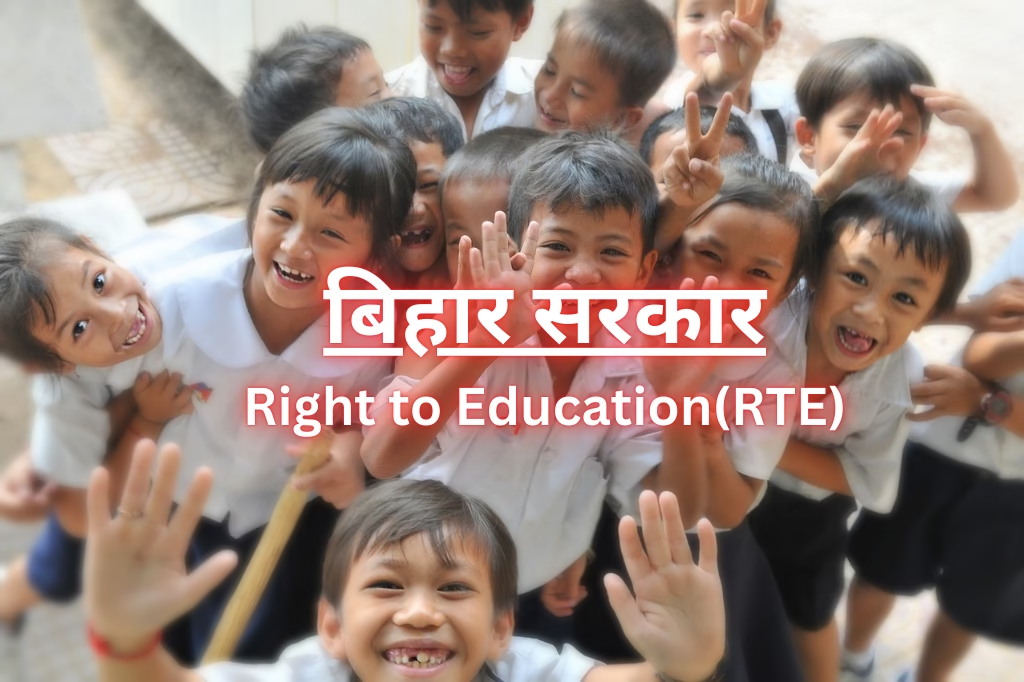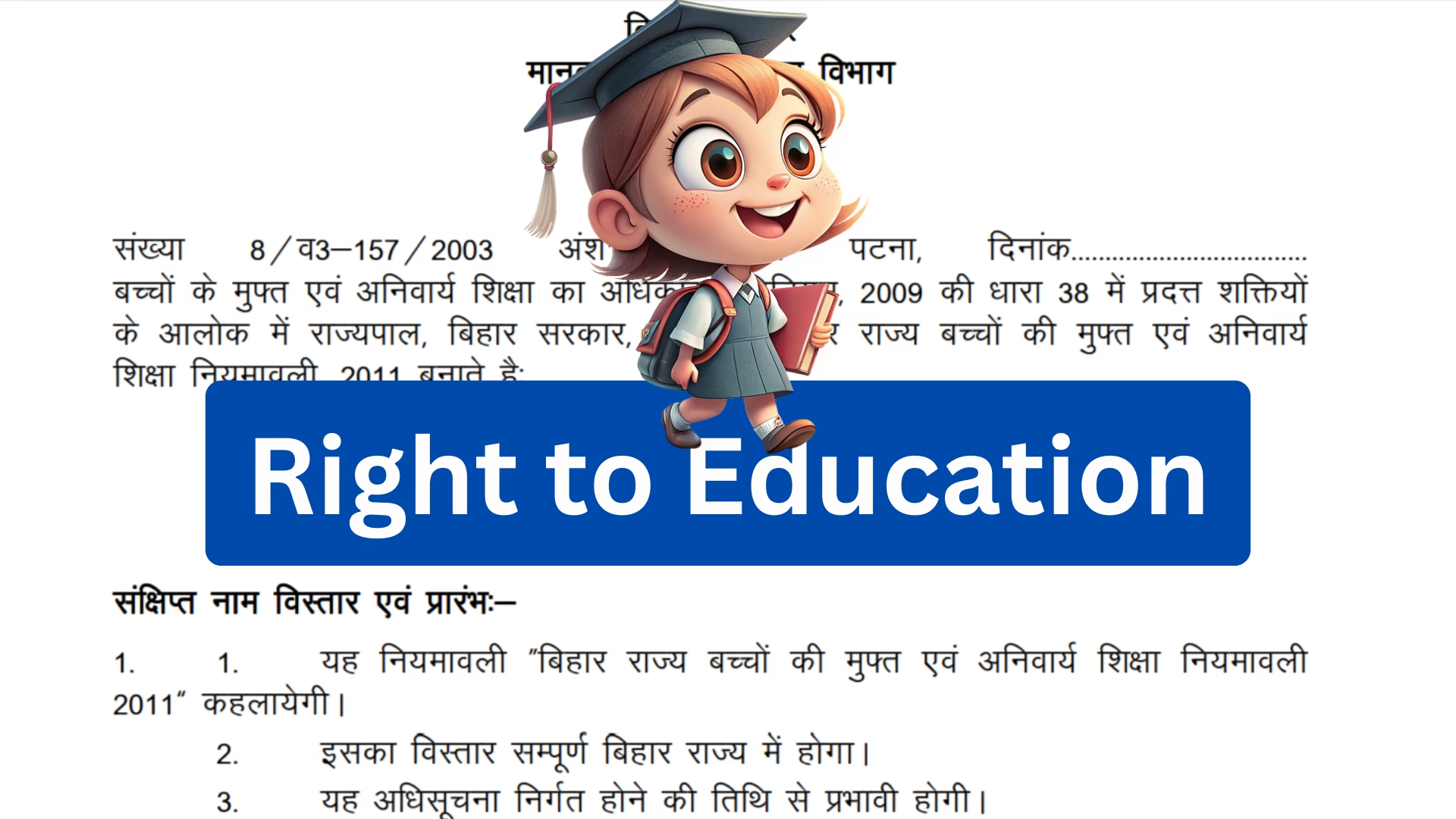The Right to Education (RTE) Act, which became law in 2009, represents a pivotal regulatory framework in India designed to guarantee free and mandatory education for children aged 6 to 14.
This legislation is a crucial advancement towards realizing universal education, aiming to ensure that every child in India can access quality schooling. Grounded in ideals of fairness, equality, and social justice, the RTE Act addresses the many obstacles hindering children’s access to education.
Implementing the RTE Act in Bihar, one of the most densely populated and economically disadvantaged regions of India, has presented both hurdles and possibilities.
This article offers a comprehensive analysis of the RTE Act within the context of Bihar and India, detailing its characteristics, implementation, challenges, and potential future actions.
Historical Background of RTE in India
The notion of the Right to Education in India traces its origins to the country’s Constitution, which was established in 1950. Article 45 within the Directive Principles of State Policy articulated that the state should strive to ensure free and compulsory education for all children until they reach 14 years old.
However, it was only in 2002 that the Right to Education was raised to the status of a fundamental right, thanks to the 86th Constitutional Amendment. This amendment added Article 21-A to the Constitution, asserting that the state is responsible for providing free and mandatory education to every child aged 6 to 14 years.
The RTE Act passed in 2009, was instituted to put this constitutional amendment into practice. The law took effect on April 1, 2010, laying out the framework for delivering free and compulsory education to children throughout India.
Key Features of the RTE Act
The RTE Act encompasses numerous essential features designed to guarantee that every child in India has access to quality education. Some of the primary attributes of the act include:
- Free and Compulsory Education: The RTE Act stipulates that every child aged 6 to 14 years possesses the right to complimentary and mandatory education at a local school. This ensures that no child can be refused admission to educational institutions, and no fees can be imposed for primary education.
- Neighborhood Schools: The act obligates the government to guarantee the existence of a primary school no more than 1 km away and an upper primary school no more than 3 km away from each child’s home. This stipulation aims to enhance accessibility to schools for all children, particularly those in rural and isolated regions.
- No Detention Policy: The RTE Act established a no-detention strategy, meaning no child can be retained or expelled from school until they finish their elementary education (up to class 8). This policy was developed to lower the dropout rate and ensure that children complete their schooling.
- 25% Reservation for Disadvantaged Groups: The legislation stipulates that private unaided educational institutions are obligated to reserve a minimum of 25% of their seats for students belonging to economically disadvantaged sections and underprivileged communities. The government compensates these institutions for the expenses incurred in the education of these students.
- Quality Education: The RTE Act underscores the significance of high-quality education and establishes baseline requirements for school facilities, teacher-student ratios, and educator qualifications. Schools must provide sufficient classrooms, sanitation facilities, clean drinking water, and recreational areas. Additionally, it is a requirement that the ratio of pupils to teachers does not surpass 30:1.
- Teacher Training and Qualifications: The act mandates that every educator must fulfill the minimum qualification standards set by the National Council for Teacher Education. Furthermore, it requires that teachers participate in ongoing training sessions to enhance their expertise and understanding.
- School Management Committees (SMCs): The RTE Act requires the establishment of School Management Committees in every government and aided school. These committees, composed of parents, educators, and members from the local community, are tasked with overseeing school operations and ensuring adherence to the act’s stipulations.
- Prohibition of Corporal Punishment: The legislation forbids any form of corporal punishment or mental abuse towards students in educational settings. Additionally, it prohibits the assessment of children for admission purposes and the imposition of capitation fees.

Implementation of RTE in Bihar
Bihar, characterized by its vast population and socio-economic obstacles, has encountered numerous challenges in executing the RTE Act. Nevertheless, the state authorities have initiated various measures to guarantee the effective application of the act’s provisions. Some principal actions taken by the Bihar government are detailed below:
- Infrastructure Development: The government of Bihar has concentrated its efforts on enhancing the infrastructure of educational institutions to align with the standards set forth by the RTE Act.
- This initiative encompasses the construction of additional classrooms, sanitation facilities, drinking water supplies, and play areas. The government has also supplied essential furniture, teaching materials, and other requisite resources to schools.
- Teacher Recruitment and Training: In response to the teacher shortage, the Bihar government has appointed thousands of new educators in recent years. Additionally, the government has highlighted the significance of training for teachers, organizing frequent training sessions aimed at advancing the skills and knowledge of the teaching workforce.
- Mid-Day Meal Scheme: The Mid-Day Meal Scheme, which offers complimentary meals to students in governmental schools, has been effectively executed in Bihar. This initiative has not only enhanced the nutritional well-being of children but also boosted both school attendance and enrollment rates.
- Free Textbooks and Uniforms: The Bihar administration supplies free textbooks and clothing to students in state-run educational institutions. This program has alleviated some of the financial strain on families and has motivated a greater number of students to pursue their education.
- Kasturba Gandhi Balika Vidyalaya (KGBV): To advance education for girls, the Bihar government has initiated the establishment of Kasturba Gandhi Balika Vidyalayas (KGBVs) across various districts. These boarding schools offer complimentary education, lodging, and meals to girls hailing from underprivileged backgrounds.
- School Chalo Abhiyan: The Bihar government has introduced the School Chalo Abhiyan (Let’s Go to School Campaign) aimed at boosting enrollment and attendance in schools. As part of this initiative, awareness programs are held in villages to motivate parents to enroll their children in schools.
- Digital Education: The Bihar government is taking measures to enhance digital learning within schools. Numerous schools have been equipped with computer labs, and students are being instructed in basic computing skills. Additionally, e-learning platforms have been launched to supply digital resources to students.
Challenges in Implementing RTE in Bihar
Despite the Bihar government’s initiatives, numerous obstacles persist in effectively executing the RTE Act. Here are some of the key challenges:

- Teacher Shortage: Bihar grapples with a lack of qualified educators, particularly in rural regions. Many educational institutions struggle with a concerning pupil-teacher ratio, impacting educational quality.
2. Infrastructure Deficiencies: Although the government has aimed to upgrade school facilities, numerous schools still do not have essential amenities like toilets, clean drinking water, and electricity. This inadequacy detrimentally affects the overall learning atmosphere in these institutions.
3. Girls’ Education: Even with the creation of KGBVs and related programs, girls’ education remains a significant issue in Bihar. Cultural and social hurdles continue to hinder girls from pursuing their education, particularly in rural settings.
4. Poverty and Inequality: Economic hardship and social disparities pose significant obstacles to education in Bihar. Children from impoverished families often have to work to contribute to their households, limiting their ability to attend classes.
5.Awareness and Attitude: A lack of understanding regarding the value of education, combined with negative perceptions about schooling—especially for girls—represents major challenges in Bihar. Many parents undervalue education and choose to keep their children at home or put them to work instead.
6. Quality of Education: While the RTE Act highlights the need for quality education, numerous schools in Bihar face difficulties in delivering high standards of instruction. Ineffective teaching practices, untrained educators, and insufficient learning resources are factors that compromise the quality of education.
Government Initiatives to Overcome Challenges
The government of Bihar has initiated various programs to tackle the obstacles in enforcing the RTE Act. Some significant actions taken are outlined below:
- Hiring and Training of Teachers: The authorities have persistently hired additional educators and provided them with continuous professional development. This approach has enhanced the teaching standards within classrooms.
- Development of Infrastructure: Financial resources have been earmarked for building new classrooms, restrooms, and other essential amenities in educational institutions. Additionally, initiatives are underway to ensure that every school has access to electricity and drinking water.
- Campaigns for Awareness: Numerous campaigns have been initiated by the government to inform parents regarding the significance of education. These efforts aim to transform perceptions toward education and motivate parents to enroll their children in school.
- Support for Female Education: To advance the education of girls, the government offers scholarships, complimentary uniforms, and various other incentives. The introduction of KGBVs has also contributed positively to the rise in female student enrollment in educational settings.
- Involvement of the Community: The government has promoted community engagement in school administration through the creation of School Management Committees (SMCs). These groups are vital in overseeing school operations and ensuring adherence to the guidelines of the RTE Act.
- Digital Advancements: Several digital programs have been implemented by the government to elevate educational quality. These encompass the establishment of computer labs, e-learning environments, and online resources for students.
Impact of RTE in Bihar
The introduction of the RTE Act in Bihar has profoundly influenced the educational landscape of the region. Notable effects include:
- Increased Enrollment: The RTE Act has contributed to a remarkable rise in student enrollment across Bihar. A larger number of children, particularly those from less privileged backgrounds, are now attending educational institutions.
- Improved Infrastructure: Government initiatives aimed at enhancing school facilities have yielded better accommodations for learners. Numerous schools now boast sufficient classrooms, sanitary toilets, and accessible drinking water.
- Reduced Dropout Rates: Policies such as the no-detention rule and various programs have successfully lowered dropout statistics in Bihar. An increasing number of children are finishing their primary education.
- Increased Awareness: Efforts in raising awareness and engaging the community have shifted perceptions regarding education. A greater number of parents now recognize the value of education and are encouraging their children to be enrolled in schools.
- Girls’ Education: The creation of KGBVs along with other initiatives has fostered greater enrollment of girls in educational settings. More girls are completing their studies and advancing to higher education.
Way Forward
Despite the RTE Act leading to notable enhancements in Bihar’s education system, considerable progress is still required. To guarantee that every child in Bihar has the opportunity for quality education, the following measures should be undertaken:
- Addressing Teacher Shortage: The government must persist in hiring qualified educators and offering them consistent training. Additionally, efforts should focus on improving teachers’ working environments and providing the necessary support.
- Enhancing Infrastructure: The administration should increase its budget for building new classrooms, sanitation facilities, and other amenities in educational institutions. Additionally, efforts must be directed toward supplying electricity and safe drinking water to all schools.
- Advancing Girls’ Education: The administration ought to persist in advocating for girls’ education via scholarships, complimentary school uniforms, and various incentives. There should also be initiatives aimed at altering societal and cultural perceptions regarding the education of girls.
- Involving the Community: The administration needs to support heightened community involvement in the governance of schools. School Management Committees (SMCs) should be empowered to take on a more proactive role in overseeing school operations.
- Enhancing Educational Quality: The administration should prioritize advancing the standard of education in schools. This encompasses offering improved instructional techniques, qualified educators, and sufficient educational resources.
- Advocating for Digital Learning: The administration should keep promoting digital education within schools. Measures should be taken to facilitate the establishment of computer centers, online learning platforms, and digital resources for students.
Conclusion
The Right to Education (RTE) Act represents a crucial move towards achieving comprehensive education for all in India. In Bihar, the execution of the RTE Act has resulted in numerous beneficial changes within the educational framework. Nonetheless, several challenges remain that must be addressed to guarantee that every child in Bihar has access to high-quality education.
Collaboration between the government, local communities, and other involved parties is essential to tackle these issues and ensure the successful application of the RTE Act. Only through these collective efforts can we aspire to fulfill the vision of universal education and foster a brighter future for the youth of Bihar and India.
Right To Education (Bihar)



